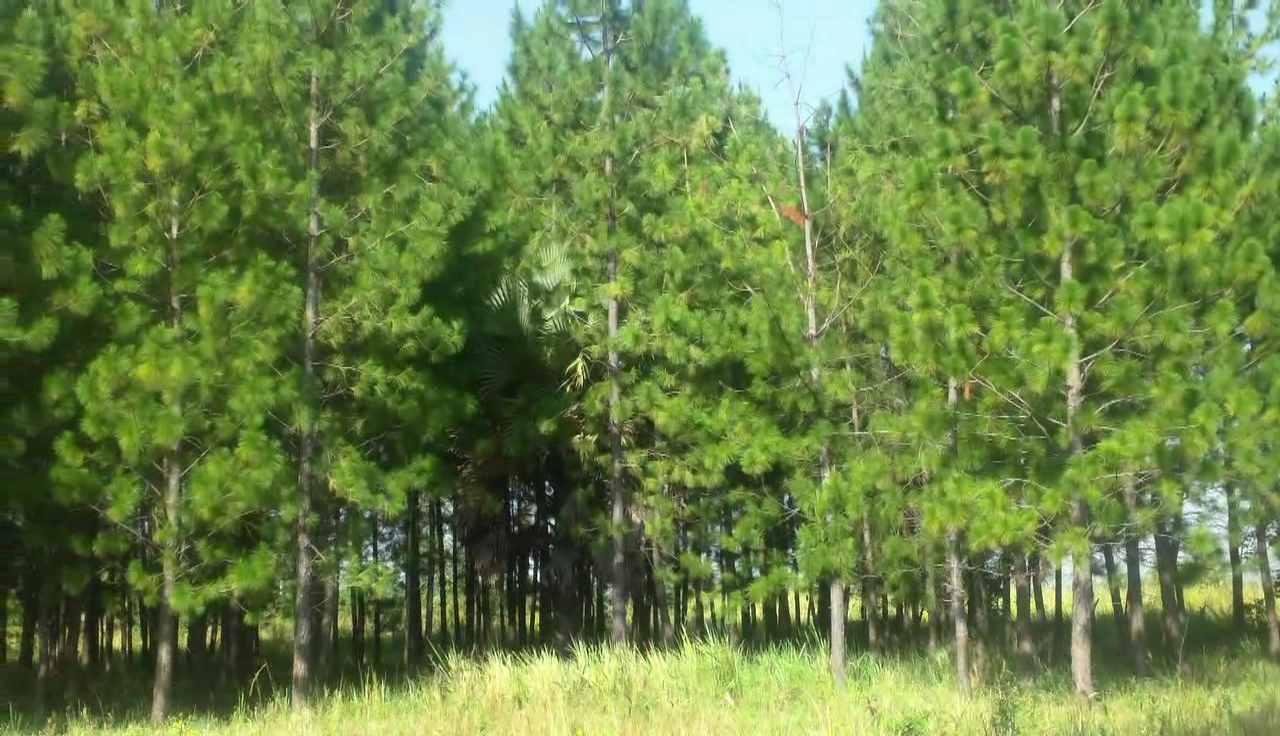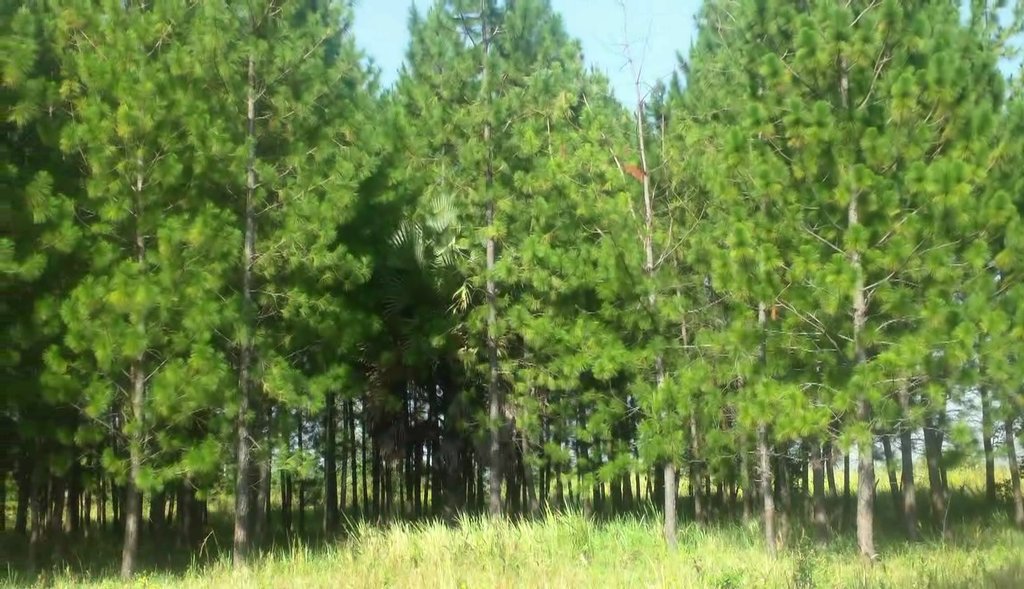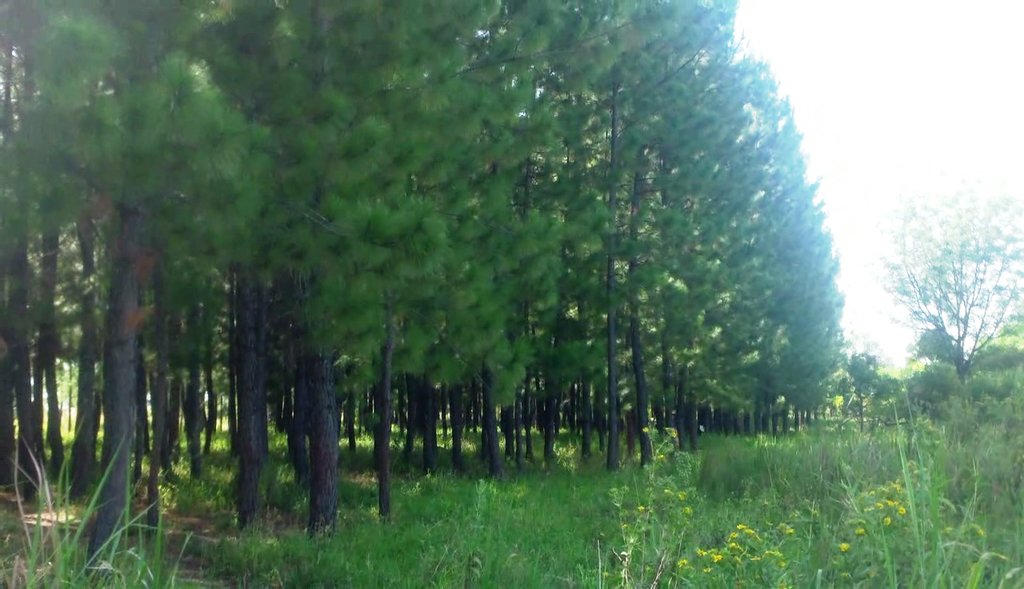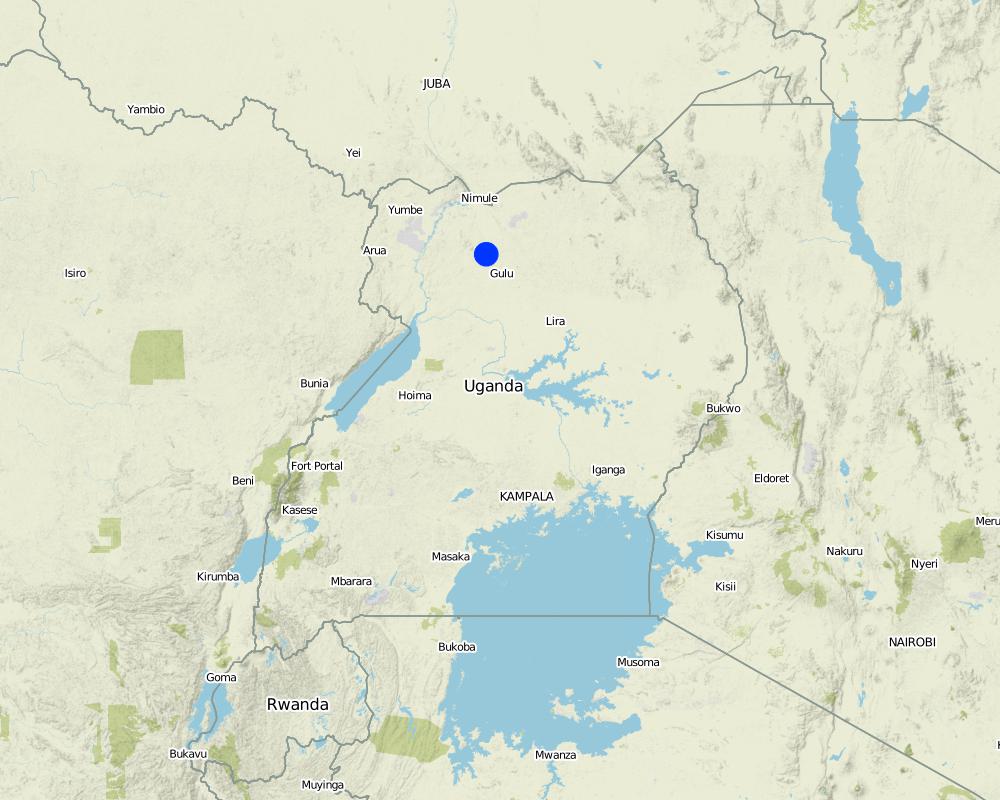Pine Woodlot [Uganda]
- Creation:
- Update:
- Compiler: Kamugisha Rick Nelson
- Editors: JOY TUKAHIRWA, Bernard Fungo, Sunday Balla Amale
- Reviewers: Donia Mühlematter, Drake Mubiru, Nicole Harari, Renate Fleiner, Stephanie Jaquet
Pito Yen pine
technologies_2825 - Uganda
View sections
Expand all Collapse all1. General information
1.2 Contact details of resource persons and institutions involved in the assessment and documentation of the Technology
Key resource person(s)
land user:
Okecokon Alex
Farmer
Uganda
Name of project which facilitated the documentation/ evaluation of the Technology (if relevant)
Scaling-up SLM practices by smallholder farmers (IFAD)Name of the institution(s) which facilitated the documentation/ evaluation of the Technology (if relevant)
CDE Centre for Development and Environment (CDE Centre for Development and Environment) - Switzerland1.3 Conditions regarding the use of data documented through WOCAT
The compiler and key resource person(s) accept the conditions regarding the use of data documented through WOCAT:
Yes
1.4 Declaration on sustainability of the described Technology
Is the Technology described here problematic with regard to land degradation, so that it cannot be declared a sustainable land management technology?
No
1.5 Reference to Questionnaire(s) on SLM Approaches (documented using WOCAT)
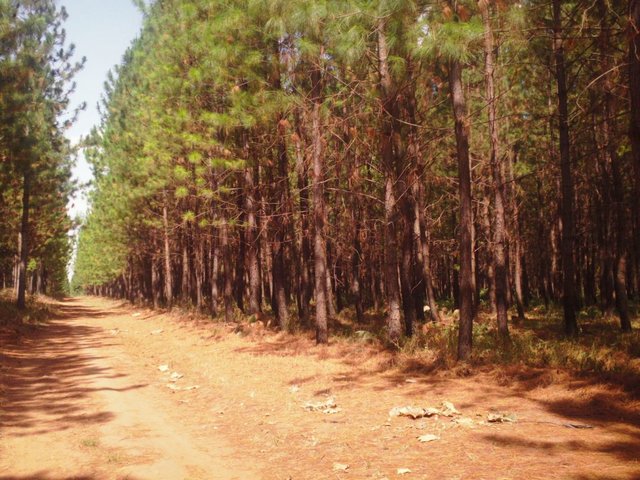
WALA Women Group Community Tree planting Approach [Uganda]
A sustainable tree planting group approach involving thirty seven women to serve the most vulnerable community for sustainable development.
- Compiler: Kamugisha Rick Nelson
2. Description of the SLM Technology
2.1 Short description of the Technology
Definition of the Technology:
A Woodlot of Pine (Pinus caribaea) is a fast growing, tolerant tree based plantation established to address land cover depletion, soil fertility loss and soil erosion control.
2.2 Detailed description of the Technology
Description:
To establish this technology, the farmer excavates a hole and wait for 4-6 days to allow air that can burn the seedlings first get out and then plant the seedlings. If the planting is done during the dry season, it is important that the farmer water the seedlings regularly to avoid drying.
The activities involved in establishing this technology include: (1) Looking for suitable land to establish the technology (2) Looking for labor, and appropriate seedlings and tools to use, (3) Identifying the expert/ trainer to train on how to plant and the right spacing (4) Digging the holes (30cm deep) and waiting for 4-6 days before planting. It is important that the farmer weeds the plantation if weeds develop.
Pinus caribaea is an important forest plantation tree that is fast growing, tolerant to poor soils which don’t retain water and nutrients and often drains too well that may cause the roots to rot or fail to develop and its wood can be milled into timber, pulped or used as poles. The common inputs required for establishing such a technology include a hoe, a panga, a planting string, seedlings, and a trainer.
This technology is easy and cheap to maintain once established. It is good for timber, firewood and environmental conservation with the costs of buying seedlings and payment for labor being high at the time of establishment compared to the costs of recurrent maintenance activities.
What is not liked about this technology is that the benefits are realized after a long time. Secondly, pine is not a source of food until when it is sold and cash is used to buy food unlike fruit trees such as mangoes and oranges.
2.3 Photos of the Technology
2.4 Videos of the Technology
Comments, short description:
Video on woodlot plantation in Amuru District, Northern Uganda.
Date:
25/06/2017
Location:
Amuru District, Northern Uganda
Name of videographer:
Issa
2.5 Country/ region/ locations where the Technology has been applied and which are covered by this assessment
Country:
Uganda
Region/ State/ Province:
Northern Region,Uganda
Further specification of location:
Amuru District
Specify the spread of the Technology:
- evenly spread over an area
If precise area is not known, indicate approximate area covered:
- < 0.1 km2 (10 ha)
Comments:
Map showing technology site in Northern Uganda.
Map
×2.6 Date of implementation
Indicate year of implementation:
2015
If precise year is not known, indicate approximate date:
- less than 10 years ago (recently)
2.7 Introduction of the Technology
Specify how the Technology was introduced:
- through land users' innovation
3. Classification of the SLM Technology
3.1 Main purpose(s) of the Technology
- improve production
- reduce, prevent, restore land degradation
- conserve ecosystem
- adapt to climate change/ extremes and its impacts
- create beneficial economic impact
- create beneficial social impact
3.2 Current land use type(s) where the Technology is applied

Forest/ woodlands
Products and services:
- Timber
- Fuelwood
3.4 Water supply
Water supply for the land on which the Technology is applied:
- mixed rainfed-irrigated
Comments:
When its dry.
3.5 SLM group to which the Technology belongs
- forest plantation management
3.6 SLM measures comprising the Technology

agronomic measures
- A1: Vegetation/ soil cover
- A2: Organic matter/ soil fertility
- A3: Soil surface treatment
- A4: Subsurface treatment
- A5: Seed management, improved varieties

vegetative measures
- V1: Tree and shrub cover

management measures
- M1: Change of land use type
- M2: Change of management/ intensity level
- M3: Layout according to natural and human environment
3.7 Main types of land degradation addressed by the Technology

soil erosion by wind
- Et: loss of topsoil
- Ed: deflation and deposition

chemical soil deterioration
- Cn: fertility decline and reduced organic matter content (not caused by erosion)

biological degradation
- Bs: quality and species composition/ diversity decline

water degradation
- Hp: decline of surface water quality
3.8 Prevention, reduction, or restoration of land degradation
Specify the goal of the Technology with regard to land degradation:
- prevent land degradation
- adapt to land degradation
Comments:
Pine is more of timber and firewood.
4. Technical specifications, implementation activities, inputs, and costs
4.1 Technical drawing of the Technology
Technical specifications (related to technical drawing):
2.5 metres within raws
3 metres between raws
10 metres between blocks
5-6 metres wide.
Author:
Kaheru
Date:
25/05/2017
4.2 General information regarding the calculation of inputs and costs
Specify how costs and inputs were calculated:
- per Technology area
Indicate size and area unit:
0.5 acres
other/ national currency (specify):
UGX
If relevant, indicate exchange rate from USD to local currency (e.g. 1 USD = 79.9 Brazilian Real): 1 USD =:
3400.0
Indicate average wage cost of hired labour per day:
5000 per person per day
4.3 Establishment activities
| Activity | Timing (season) | |
|---|---|---|
| 1. | lookIing for suitable land | Before planting |
| 2. | Looking for tools, labour and seedlings | Before planting |
| 3. | Looking for expert/trainer | Before planting |
| 4. | Preparing land for planting | At the time of planting |
| 5. | Digging the holes (30-60cm) | During planting |
| 6. | Planting with spacing of 3m x3m | During planting |
| 7. | Watering: Dry season | After planting |
| 8. | Monitoring and security provision. | After planting |
4.4 Costs and inputs needed for establishment
| Specify input | Unit | Quantity | Costs per Unit | Total costs per input | % of costs borne by land users | |
|---|---|---|---|---|---|---|
| Labour | Labour | persons | 10.0 | 5000.0 | 50000.0 | 100.0 |
| Equipment | Panga | Pieces | 1.0 | 7000.0 | 7000.0 | 100.0 |
| Equipment | Hoe | Pieces | 10.0 | 10000.0 | 100000.0 | 100.0 |
| Equipment | Panga | Pieces | 3.0 | 7000.0 | 21000.0 | 100.0 |
| Plant material | Seedlings | Kgs | 4000.0 | 2500.0 | 10000000.0 | |
| Construction material | Bamboo- bundles | Bundles | 1.0 | 15000.0 | 15000.0 | |
| Other | watering can | Pieces | 3.0 | 25000.0 | 75000.0 | |
| Total costs for establishment of the Technology | 10268000.0 | |||||
| Total costs for establishment of the Technology in USD | 3020.0 | |||||
4.5 Maintenance/ recurrent activities
| Activity | Timing/ frequency | |
|---|---|---|
| 1. | weeding/slashing | Twice a year: when still young |
| 2. | Watering | During dry season: trees still young |
| 3. | Prunning | Twice a year |
| 4. | Security and moniroring | Daily |
4.6 Costs and inputs needed for maintenance/ recurrent activities (per year)
| Specify input | Unit | Quantity | Costs per Unit | Total costs per input | % of costs borne by land users | |
|---|---|---|---|---|---|---|
| Labour | Labour on monthly basis | Persons | 10.0 | 150000.0 | 1500000.0 | 100.0 |
| Total costs for maintenance of the Technology | 1500000.0 | |||||
| Total costs for maintenance of the Technology in USD | 441.18 | |||||
4.7 Most important factors affecting the costs
Describe the most determinate factors affecting the costs:
Seedlings and labour takes most of the costs.
5. Natural and human environment
5.1 Climate
Annual rainfall
- < 250 mm
- 251-500 mm
- 501-750 mm
- 751-1,000 mm
- 1,001-1,500 mm
- 1,501-2,000 mm
- 2,001-3,000 mm
- 3,001-4,000 mm
- > 4,000 mm
Specify average annual rainfall (if known), in mm:
1500.00
Agro-climatic zone
- sub-humid
5.2 Topography
Slopes on average:
- flat (0-2%)
- gentle (3-5%)
- moderate (6-10%)
- rolling (11-15%)
- hilly (16-30%)
- steep (31-60%)
- very steep (>60%)
Landforms:
- plateau/plains
- ridges
- mountain slopes
- hill slopes
- footslopes
- valley floors
Altitudinal zone:
- 0-100 m a.s.l.
- 101-500 m a.s.l.
- 501-1,000 m a.s.l.
- 1,001-1,500 m a.s.l.
- 1,501-2,000 m a.s.l.
- 2,001-2,500 m a.s.l.
- 2,501-3,000 m a.s.l.
- 3,001-4,000 m a.s.l.
- > 4,000 m a.s.l.
Indicate if the Technology is specifically applied in:
- concave situations
5.3 Soils
Soil depth on average:
- very shallow (0-20 cm)
- shallow (21-50 cm)
- moderately deep (51-80 cm)
- deep (81-120 cm)
- very deep (> 120 cm)
Soil texture (topsoil):
- medium (loamy, silty)
Soil texture (> 20 cm below surface):
- fine/ heavy (clay)
Topsoil organic matter:
- medium (1-3%)
5.4 Water availability and quality
Ground water table:
< 5 m
Availability of surface water:
medium
Water quality (untreated):
poor drinking water (treatment required)
Is water salinity a problem?
No
Is flooding of the area occurring?
No
5.5 Biodiversity
Species diversity:
- medium
Habitat diversity:
- low
5.6 Characteristics of land users applying the Technology
Sedentary or nomadic:
- Sedentary
Market orientation of production system:
- mixed (subsistence/ commercial)
Off-farm income:
- less than 10% of all income
Relative level of wealth:
- poor
Individuals or groups:
- groups/ community
Level of mechanization:
- manual work
Gender:
- women
Age of land users:
- youth
- middle-aged
5.7 Average area of land used by land users applying the Technology
- < 0.5 ha
- 0.5-1 ha
- 1-2 ha
- 2-5 ha
- 5-15 ha
- 15-50 ha
- 50-100 ha
- 100-500 ha
- 500-1,000 ha
- 1,000-10,000 ha
- > 10,000 ha
Is this considered small-, medium- or large-scale (referring to local context)?
- small-scale
5.8 Land ownership, land use rights, and water use rights
Land ownership:
- group
- individual, not titled
Land use rights:
- individual
Water use rights:
- individual
5.9 Access to services and infrastructure
health:
- poor
- moderate
- good
education:
- poor
- moderate
- good
technical assistance:
- poor
- moderate
- good
employment (e.g. off-farm):
- poor
- moderate
- good
markets:
- poor
- moderate
- good
energy:
- poor
- moderate
- good
roads and transport:
- poor
- moderate
- good
drinking water and sanitation:
- poor
- moderate
- good
financial services:
- poor
- moderate
- good
6. Impacts and concluding statements
6.1 On-site impacts the Technology has shown
Socio-economic impacts
Production
wood production
Comments/ specify:
from the planted pine trees.
forest/ woodland quality
Comments/ specify:
Due to prunning.
land management
Comments/ specify:
Slashing and weeding.
Income and costs
expenses on agricultural inputs
Comments/ specify:
for labours.
farm income
Comments/ specify:
From the sale of timber and fuel wood.
diversity of income sources
Comments/ specify:
Timber and fuel wood.
workload
Comments/ specify:
Planting, watering, thinning and pruning and harvesting.
Ecological impacts
Soil
soil cover
Comments/ specify:
Where the pine trees are planted.
soil loss
Comments/ specify:
Due to planted trees.
soil organic matter/ below ground C
Comments/ specify:
Especially where the trees are planted and was originally degraded.
Biodiversity: vegetation, animals
invasive alien species
Comments/ specify:
Causing serious problems to natural habitat.
habitat diversity
Comments/ specify:
Due to Invasive species.
Climate and disaster risk reduction
fire risk
Comments/ specify:
If not protected with fireline.
6.3 Exposure and sensitivity of the Technology to gradual climate change and climate-related extremes/ disasters (as perceived by land users)
Gradual climate change
Gradual climate change
| Season | increase or decrease | How does the Technology cope with it? | |
|---|---|---|---|
| annual temperature | increase | moderately | |
| seasonal temperature | wet/ rainy season | increase | moderately |
6.4 Cost-benefit analysis
How do the benefits compare with the establishment costs (from land users’ perspective)?
Short-term returns:
slightly negative
Long-term returns:
slightly positive
How do the benefits compare with the maintenance/ recurrent costs (from land users' perspective)?
Short-term returns:
slightly negative
Long-term returns:
positive
Comments:
Benefits are low in the short run and high in the long run.
6.5 Adoption of the Technology
- 1-10%
Of all those who have adopted the Technology, how many did so spontaneously, i.e. without receiving any material incentives/ payments?
- 0-10%
6.6 Adaptation
Has the Technology been modified recently to adapt to changing conditions?
No
6.7 Strengths/ advantages/ opportunities of the Technology
| Strengths/ advantages/ opportunities in the land user’s view |
|---|
| Good at providing fire wood in the short run after prunning. |
| The costs are low after establishment (prunning, monitoring). |
| Easy to establish once the seedlings are available and can easily be replicated by other farmers. |
| Suitable for both small scale and large farmers with similar or different land sizes. |
| Strengths/ advantages/ opportunities in the compiler’s or other key resource person’s view |
|---|
| The land user is managing the technology well and is likely to reap long term benefits (income and Timber). |
| The technology is easy to manage after establishment. Maintenance is not laborious. |
6.8 Weaknesses/ disadvantages/ risks of the Technology and ways of overcoming them
| Weaknesses/ disadvantages/ risks in the land user’s view | How can they be overcome? |
|---|---|
| The technology is not very much appropriate for soil fertility improvement as compared to other agroforestry trees (callindra, Grivellea and Alnus). | The land user need to integrate other agroforestry and fruit trees in the technology. |
| The technology is costly in terms of securing seedlings. The land user has to travel long distances 15km to buy the seedlings. | The land user can be trained on how to raise her own seedlings. |
| Weaknesses/ disadvantages/ risks in the compiler’s or other key resource person’s view | How can they be overcome? |
|---|---|
| The benefits of the technology are long term and may not help the land user to meet urgent needs (school fees, medical care etc) | The land user need to look at other alternative sources of income which are short term and multi-purpose e.g integrate tree planting with livestock for milk, manure and other benefits. |
| The benefits of the technology are long term from 5 to 10 years. | Explore alternatives and integrate other sources of income which are short term and multi-purpose but also good at addressing land degradation problems e.g poultry keeping. |
7. References and links
7.1 Methods/ sources of information
- field visits, field surveys
1
- interviews with land users
2
When were the data compiled (in the field)?
25/05/2017
Links and modules
Expand all Collapse allLinks

WALA Women Group Community Tree planting Approach [Uganda]
A sustainable tree planting group approach involving thirty seven women to serve the most vulnerable community for sustainable development.
- Compiler: Kamugisha Rick Nelson
Modules
No modules


